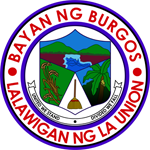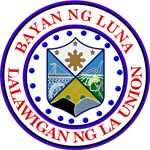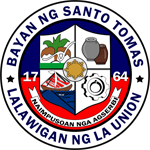BDH: Malaria Eradication through Awareness
By: Melanie Holt Photo By: GPC-BDH Date: April 25, 2019

MALARIA ERADICATION. In line with World Malaria Day Dr. Ana Claire Pagnas discusses ways of preventing and curing malaria at Bacnotan District Hospital (BDH) out-patient department on April 25, 2019.
“Malaria is a life-threatening disease caused by parasites transmitted by mosquitoes. It was a public health burden in our country in the past but through the concerted efforts of the members of the health care network, we are moving towards its eradication by the next decade,” said Dr. Ana Claire Pagnas during her lecture at Bacnotan District Hospital (BDH) out-patient department in celebration of the World Malaria Day on April 25, 2019.
Dr. Pagnas said that through the unrelenting efforts of the Department of Health-National Malaria Control and Elimination Program (DOH-NMCEP), cases and deaths have been reduced significantly, that the country is now inching towards elimination. Moreover, she said that the sub-national elimination strategy of the DOH–NMCEP has resulted to the declaration of 42 out of the 81 provinces in the country as malaria-free. Currently, only 7 provinces remain with local transmission of the disease; and the Philippines aims to eliminate malaria by 2030.
Malaria is an acute febrile illness. In a non-immune individual, symptoms usually appear 10 to 15 days after the infective mosquito bite. The early symptoms include fever, headache, and chills. If not treated within 24 hours, P. falciparum malaria can progress to severe illness, often leading to death. Also, some people experience cycles of malaria attacks. An attack usually starts with shivering and chills, followed by a high fever, followed by sweating and a return to normal temperature. However, some types of malaria parasites can lie dormant in the body for up to a year. Some varieties of the malaria parasite, which typically cause milder forms of the disease, can persist for years and cause relapses.
Dr. Pagnas assured that malaria is preventable and curable; and that vector control is the main way to prevent and reduce malaria transmission. The two forms of vector control are insecticide-treated mosquito nets, and indoor spraying with insecticides. Other ways of prevention are covering your skin with clothing such as pants and long-sleeved shirts, applying insect repellant to skin and clothing, and sleeping under a net.
It was also mentioned that antimalarial medicines can also be used to prevent malaria. For travellers, malaria can be prevented through chemoprophylaxis.
“One of the objectives of the government in the eradication of malaria is through health information and regulation, hence the role of health care providers in advocacy and social mobilization is indispensable like the conduct of awareness lectures like this,” said Dr. Pagnas.
Recent Posts
The Provincial Government of La Union (PGLU) has completed and turned over three major school infrastructure projects in three municipalities …
The Provincial Government of La Union (PGLU), in partnership with the Department of Agriculture (DA-RFO1), concluded the Provincial Rice Technology …
Rocapor’s Farm is an agri-tourism site in La Union that has a learning institution and uplifts the local community.
In line with the province’s hosting of the 2025 Region 1 Athletic Association (R1AA), the Provincial Government of La Union …
Residents from the Second District of La Union benefitted from the recently concluded Ako Bicol Partylist Medical and Dental Mission …



















